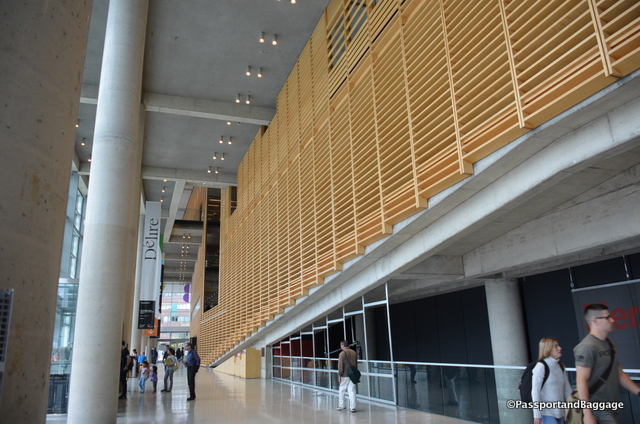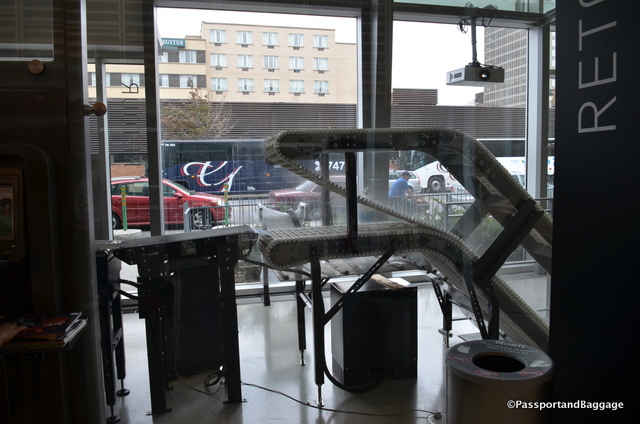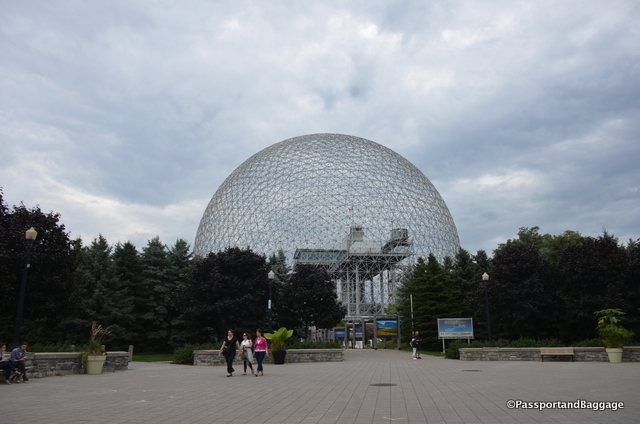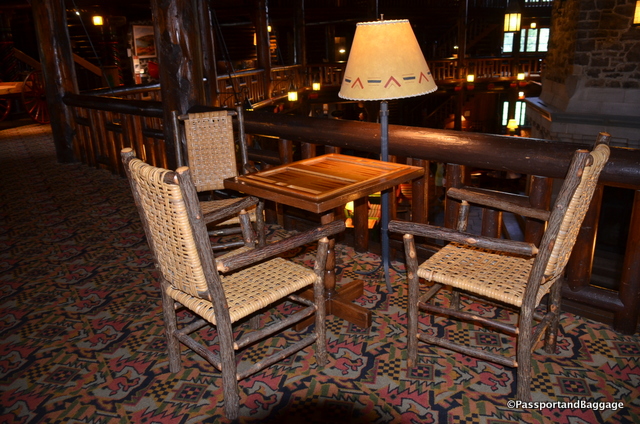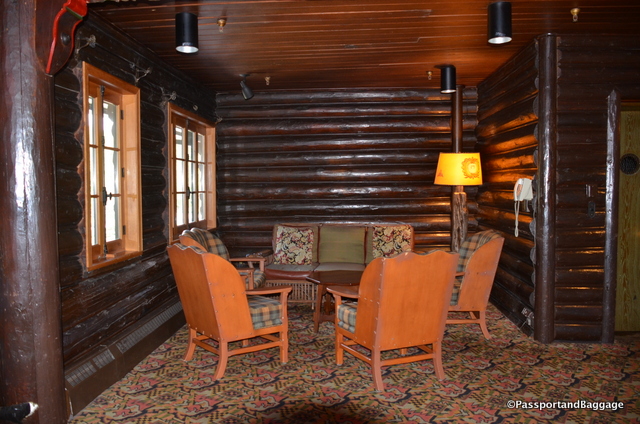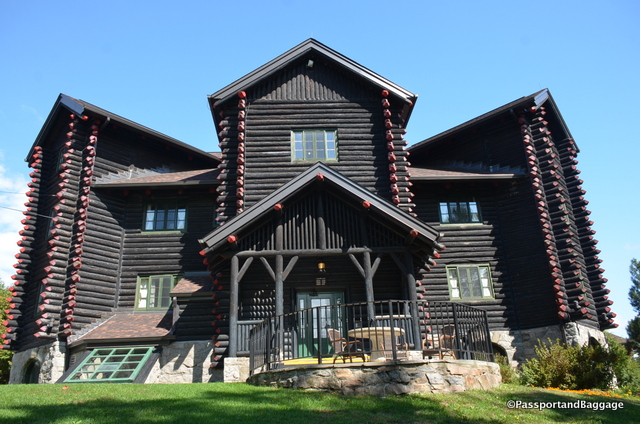September 18, 2016
 This is the Grande Bibliotheque, a public library in Downtown Montreal. Its collection is part of Bibliothèque et Archives nationales du Québec (BAnQ), Quebec’s national library.
This is the Grande Bibliotheque, a public library in Downtown Montreal. Its collection is part of Bibliothèque et Archives nationales du Québec (BAnQ), Quebec’s national library.
*
The library’s collection consists of some 4,000,000 works, including 1,140,000 books, 1,200,000 other documents, and 1,660,000 microfiches. The majority of the works are in French; about 30% are in English, and a dozen other languages are also represented. The library has some 50 miles of shelf space.
This geodesic dome, called the Biosphere was by Buckminster Fuller. The building originally formed an enclosed structure of steel and acrylic cells, 250 feet in diameter and 200 feet high. The dome is a Class 1, Frequency 16 Icosahedron.
Sadly, on May 20th, 1976, , during structural renovations, a fire burned away the building’s transparent acrylic bubble, but the fortunately the steel truss structure remained. The site remained closed until 1990 when Environment Canada bought the site for $1.75 million and turned it into an interactive eco-museum about the Great Lakes water system.
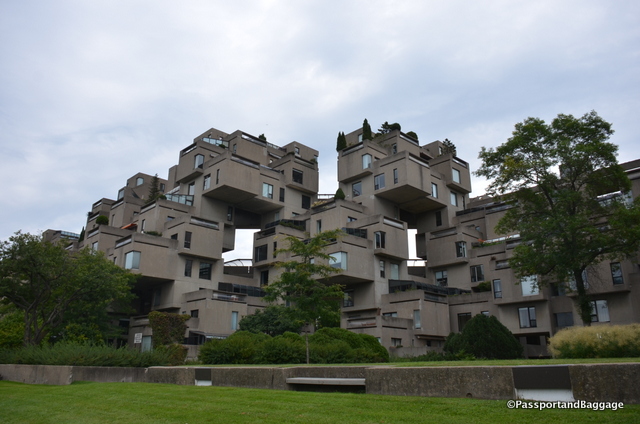 Habitat 67 is a model community and housing complex designed by Israeli/Canadian architect Moshe Safdie. It was originally conceived as his master’s thesis in architecture at McGill University and then built as a pavilion for Expo 67, the World’s Fair held from April to October 1967. Habitat 67 is widely considered an architectural landmark and one of the most recognizable and significant buildings in both Montreal and Canada.
Habitat 67 is a model community and housing complex designed by Israeli/Canadian architect Moshe Safdie. It was originally conceived as his master’s thesis in architecture at McGill University and then built as a pavilion for Expo 67, the World’s Fair held from April to October 1967. Habitat 67 is widely considered an architectural landmark and one of the most recognizable and significant buildings in both Montreal and Canada.
Habitat 67 comprises 354 identical, prefabricated concrete forms arranged in various combinations, reaching up to 12 stories in height. Together these units create 146 residences of varying sizes and configurations, each formed from one to eight linked concrete units.
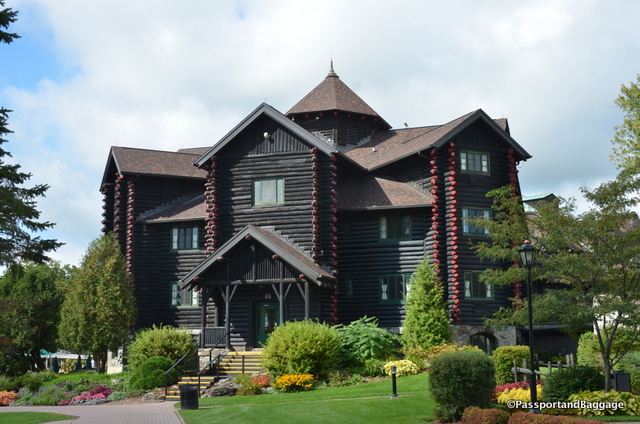 The last architectural wonder of this trip was Montebello, about 2 hours outside of Montreal. In the late 1920s, Harold M. Saddlemire, a Swiss-American entrepreneur envisioned a private wilderness retreat for business and political leaders.
The last architectural wonder of this trip was Montebello, about 2 hours outside of Montreal. In the late 1920s, Harold M. Saddlemire, a Swiss-American entrepreneur envisioned a private wilderness retreat for business and political leaders.
The Scandinavian log construction project was supervised by Finnish master-builder, Victor Nymark and construction manager Harold Landry Furst. Construction and woodworking teams worked in overlapping shifts around the clock using electric lighting at night.
A crew of 3500 laborers finished the project within four months, and the club opened on the first of July 1934.

The centerpiece of the building is a hexagonal rotunda, containing a six-sided stone fireplace that rises more than 66 feet to the roof. It features 60 foot long logs and two mezzanines that completely encircle the rotunda.
Interestingly, during this time, the church did not approve of working on the Sabbath; but by coincidence, the local curé was dispatched on an all-expenses paid trip to Rome for two months while the work proceeded apace.
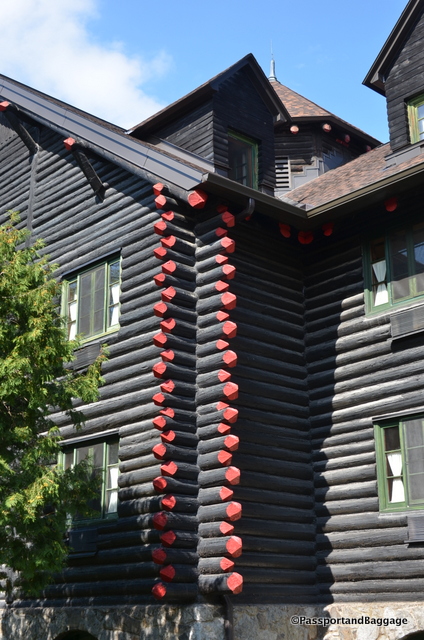 The building consists of 10,000 logs, 500,000 hand-split cedar roof shakes and 103 miles of wooden moulding. The log walls are painted black on the outside, but the interiors simply show the beauty of the wood that was shipped in from British Columbia.
The building consists of 10,000 logs, 500,000 hand-split cedar roof shakes and 103 miles of wooden moulding. The log walls are painted black on the outside, but the interiors simply show the beauty of the wood that was shipped in from British Columbia.
There are sitting rooms scattered throughout that are so inviting, you just want to stay for the week.
